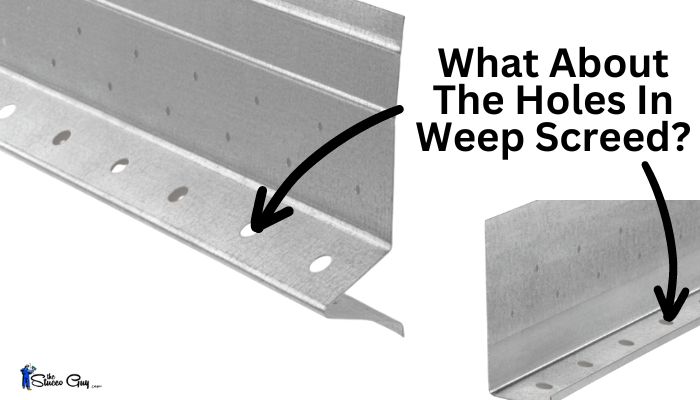
Stucco weep screed is designed to do what the name suggests, "weep" any excess water out of the stucco assembly, below the wall framing and provide a "screed" or a depth gauge for how thick your stucco should be.
There have been a number of questions about the holes that are in the weep screed and I wanted to do a quick write-up about the subject and hopefully answer any questions.
How The Holes Help With Water
Stucco is a porous material and absorbs water really well, so you need to basically redirect that water down and out, which is where the weep screed holes come into play.
The image below gives you a very rough idea of how the water is absorbed when it rains and then runs down the stucco and waterproof paper. It eventually makes its way to the weep and then exits the assembly through the many holes that are present.
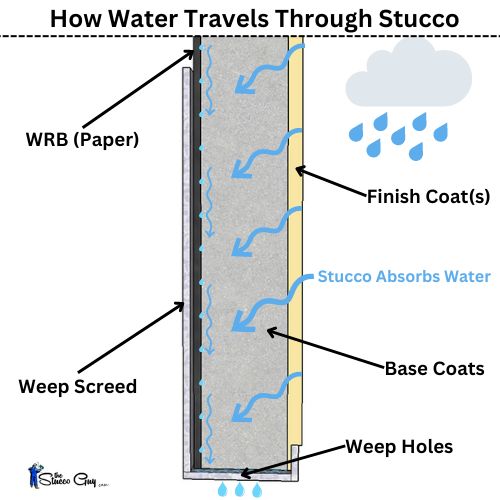
Comparing The Two Types Of Weep Screed
Whether you have a 3 coat system or a 1 coat system, you will need to have weep screed (with weep holes) mounted along the bottom plate of your walls for new construction projects.
There are two different types of weep screed though and their shapes are different, as are the weep holes. These two types are a "J" shaped design and then your traditional #7 which is slanted at the bottom.
The "J" shaped design has holes that run in the channel and is identical looking to plaster stop but has weep holes in it to allow drainage.
The #7 weep has a sideways "V" shape at the bottom and both sides of the "V" have holes in them to allow the water to fully drain. So the shape and the number of holes are the only two differences between the two different styles.
I wrote an article that goes into more detail about the differences between the different weep screeds out there, if you want to know more.
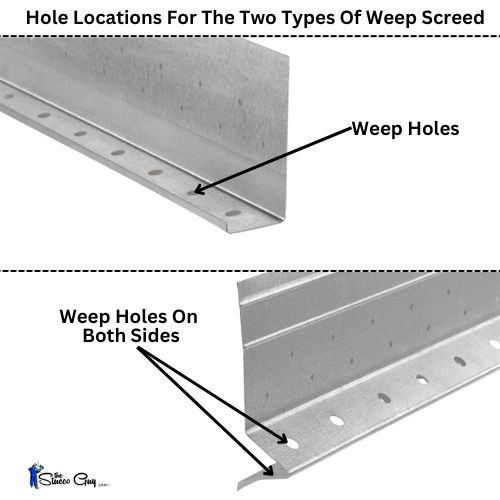
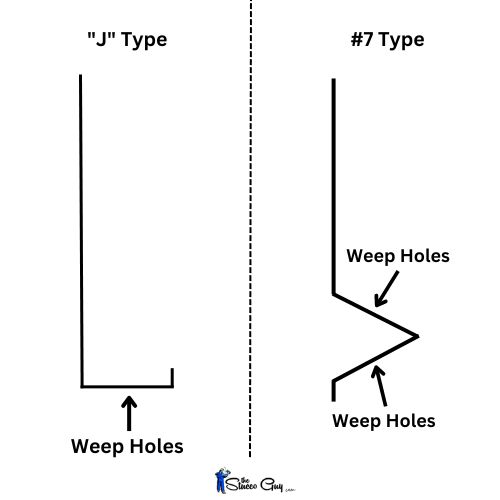
Does All Weep Screed Have Holes?
Typically, if it is called a weep screed, then it should have holes to drain any trapped moisture. Now there are some manufacturers (like Stockton Products) that make these without holes in them and still call them a weep screed, but they are more of a plaster stop. This is only true for the #7 type of weep screeds, as far as I can tell.
How does the water drain, if there are no holes? Weep that does not have holes in it will still weep water, but at a much slower rate than one with holes, and my recommendation would be not to go this route. This is achieved because the stucco will naturally separate from the metal and create a very small air gap, which is where the water will escape.
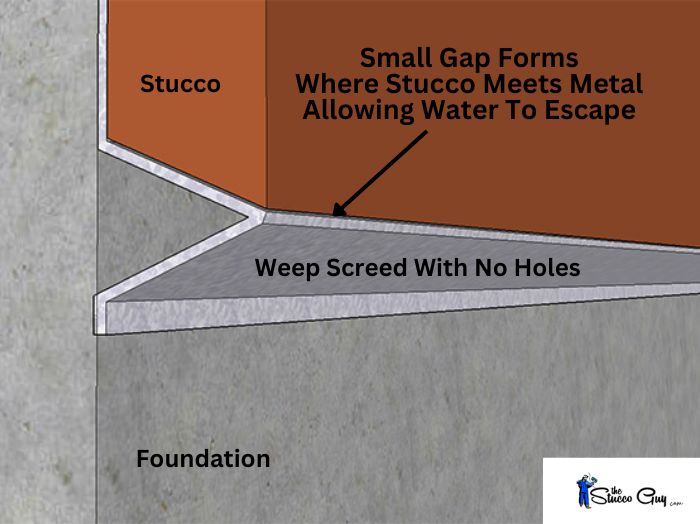
This is only true with the #7 type of screed and will not work with the "J" type, due to the design and shape of it and the small lip on the front. Most building codes (if not all) do require the weep have holes.
Do I Add Weep Holes Myself?
There seems to be a little confusion among people about the need to add the holes themselves, but if you have true "weep screed" then it will have the holes already present. The only metal that doesn't have holes is plaster stop and is not intended to be substituted for weep.
If in some rare scenario that someone installed plaster stop along the bottom of your walls without holes, you could just drill holes in the metal. I would suggest a 3/16" hole (minimum) to allow enough flow.
Sealing The Weep Holes?
I would not seal up the weep holes under any circumstances. Anything that gets stuffed in them (even screen like materials) can cause issues later on because it will restrict the full flow and can lead to potential water damage.
I know some people out there want to stuff some kind of steel wool or screen material in them in order to discourage insects from getting in their home via the screed itself, but this could come at a price. So use your own judgement and be willing to accept that "worst case" scenario if you go this route.
Sealing the gap behind the weep and the foundation is usually okay though and might help with this problem.


